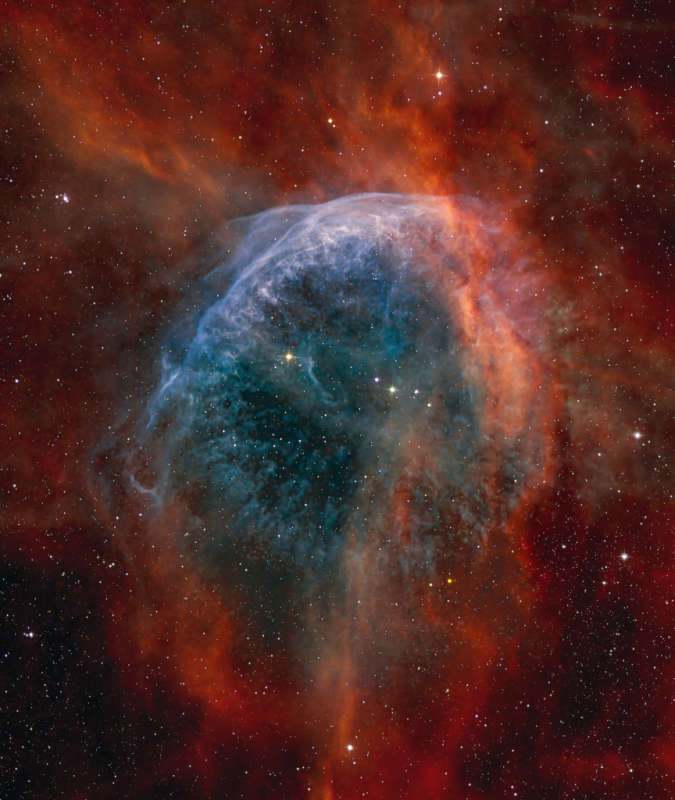
|
Credit & Copyright: Craig Stocks
Explanation:
Made with narrowband filters, this
cosmic
snapshot
covers a field of view about
the size of the full Moon within the
boundaries of the constellation Cygnus.
It highlights the bright edge of a ring-like nebula traced by the
glow
of ionized
sulfur, hydrogen, and oxygen gas.
Embedded in the region's interstellar
clouds of gas and dust,
the complex, glowing arcs are sections of bubbles or shells of
material swept up by the wind from
Wolf-Rayet star WR 134,
brightest star near the center of the frame.
Distance estimates put WR 134 about 6,000 light-years away, making
the frame over 50 light-years across.
Shedding
their outer envelopes in powerful stellar winds,
massive Wolf-Rayet stars have burned through their nuclear fuel at a
prodigious
rate
and end this final phase of massive star evolution in
a spectacular supernova explosion.
The stellar winds and final supernovae enrich the interstellar
material with heavy elements
to be incorporated in
future generations of stars.
|
January February March April May June July August September October November December |
| ||||||||||||||||||||||||||||||||||||||||||||||||
NASA Web Site Statements, Warnings, and Disclaimers
NASA Official: Jay Norris. Specific rights apply.
A service of: LHEA at NASA / GSFC
& Michigan Tech. U.
Based on Astronomy Picture
Of the Day
Publications with keywords: stellar wind
Publications with words: stellar wind
See also:
